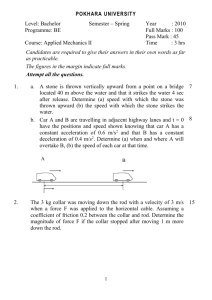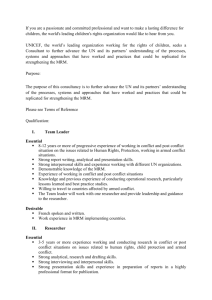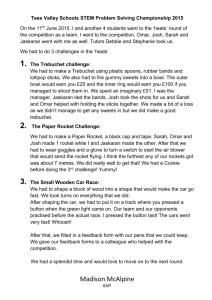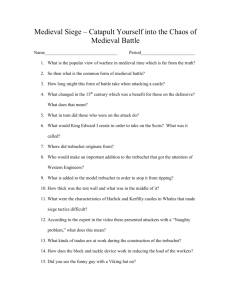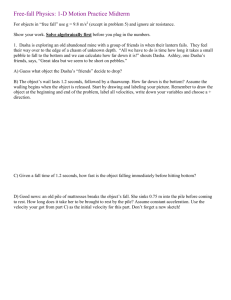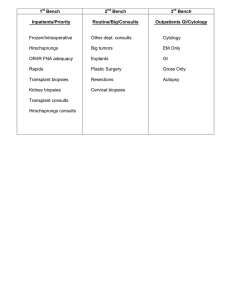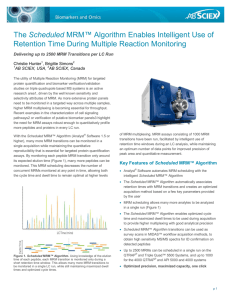Homework 8
advertisement
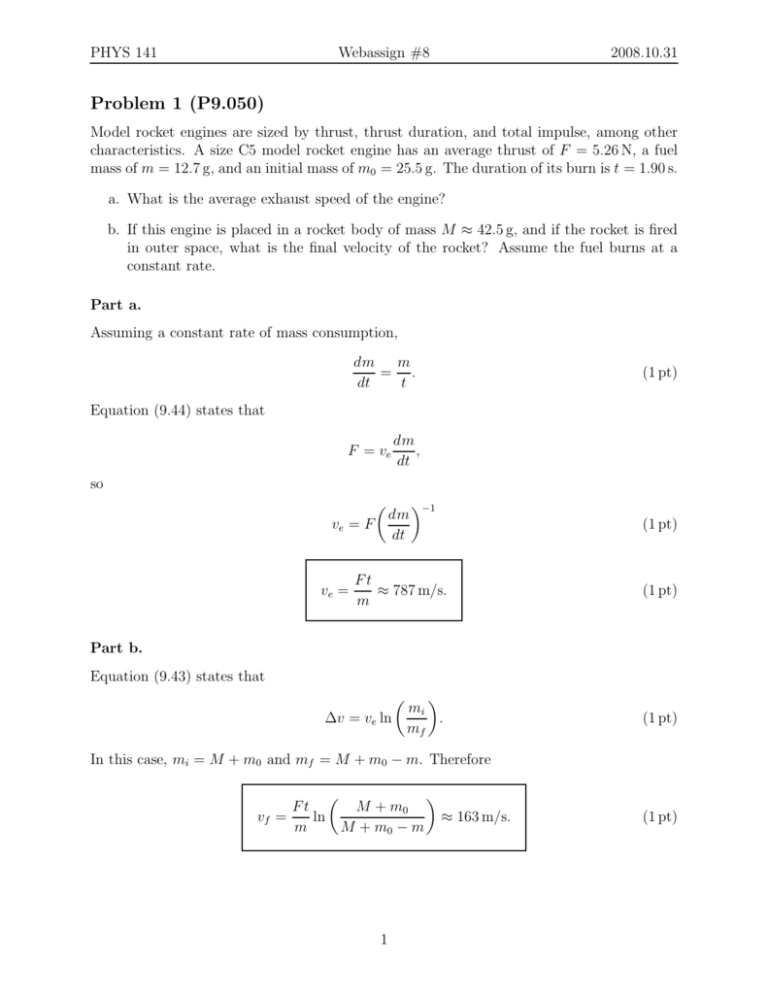
PHYS 141 Webassign #8 2008.10.31 Problem 1 (P9.050) Model rocket engines are sized by thrust, thrust duration, and total impulse, among other characteristics. A size C5 model rocket engine has an average thrust of F = 5.26 N, a fuel mass of m = 12.7 g, and an initial mass of m0 = 25.5 g. The duration of its burn is t = 1.90 s. a. What is the average exhaust speed of the engine? b. If this engine is placed in a rocket body of mass M ≈ 42.5 g, and if the rocket is fired in outer space, what is the final velocity of the rocket? Assume the fuel burns at a constant rate. Part a. Assuming a constant rate of mass consumption, m dm = . dt t (1 pt) Equation (9.44) states that F = ve dm , dt so dm ve = F dt ve = −1 (1 pt) Ft ≈ 787 m/s. m (1 pt) (1 pt) Part b. Equation (9.43) states that ∆v = ve ln mi . mf In this case, mi = M + m0 and mf = M + m0 − m. Therefore Ft ln vf = m M + m0 M + m0 − m 1 ≈ 163 m/s. (1 pt) PHYS 141 Webassign #8 2008.10.31 Problem 2 (P10.025) A war-wolf or trebuchet is a device used during the Middle Ages to throw rocks at castles and now sometimes used to fling large vegetables and pianos as a sport. A simple trebuchet is shown in the figure. Model it as a stiff rod of negligible mass, ℓ ≈ 2.60 m long, joining particles of mass M ≈ 62.5 kg and m ≈ 0.120 kg at its ends. It can turn on a frictionless, horizontal axle perpendicular to the rod and rM = 14.0 cm from the large-mass particle. The rod is released from rest in a horizontal orientation. a. Find the maximum speed that the lighter object of mass m attains. b. Select the statements that are not true: (i) While the smaller object is gaining speed, it moves with constant acceleration. (ii) The smaller object does not move with constant tangential acceleration. (iii) The trebuchet moves with constant angular acceleration. (iv) The trebuchet maintains constant momentum. (v) The trebuchet-Earth system has constant mechanical energy. Part a. For this problem, we assume that both masses stay fixed to the rod the entire time (even though for a real trebuchet the small mass would begin projectile motion at some point). Therefore, the highest velocity will be reached when the rod is vertical and the lighter mass is at the top. Our strategy will be to find the angular velocity ω at that time and then to find the linear velocity vm = ωrm . The moments of inertia are 2 Im = mrm = m(ℓ − rM )2 and 2 IM = MrM , so the total moment of inertia is 2 I = MrM + m(ℓ − rM )2 . (1 pt) Ei = Ef 0 = mgrm − MgrM + 21 Iω 2 2 = mg(ℓ − rM ) − MgrM + 21 [MrM + m(ℓ − rM )2 ])ω 2. (1 pt) Energy conservation gives Therefore the angular velocity is ω= s 2g[MrM − m(ℓ − rM )] . 2 MrM + m(ℓ − rM )2 2 PHYS 141 Webassign #8 2008.10.31 Then the linear velocity is v = (ℓ − rM ) s 2g[MrM − m(ℓ − rM )] ≈ 23.0 m/s. 2 MrM + m(ℓ − rM )2 (1 pt) Part b. The false statements (the ones you should select) are (i) While the smaller object is gaining speed, it moves with constant acceleration (~a is always changing direction, so ~a 6= const). (iii) The trebuchet moves with constant angular acceleration (Initially, α = αmax , but at ωmax , α = 0). ~ = 0, but at ωmax , L ~ =L ~ max ). (iv) The trebuchet maintains constant momentum (Initially, L The true statements are (ii) The smaller object does not move with constant tangential acceleration (α 6= const, so aT 6= const). P (v) The trebuchet-Earth system has constant mechanical energy (because Fext = 0). (2 pts) 3

